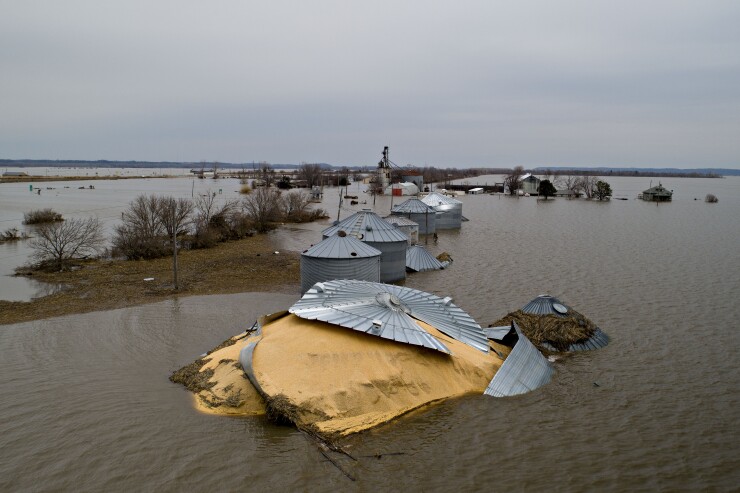Public infrastructure built with federal emergency funds must conform to stricter flood-risk standards to better protect against rising climate risk, the Biden administration said Wednesday.
The standard, which was years in the making, requires buildings and other infrastructure built with Federal Emergency Management Agency funds to be elevated higher above local flood levels, or relocated to a safer area, the agency said Wednesday.
"Climate change has exacerbated flood risk across the country, especially when it comes to sea-level rise," FEMA administrator Deanne Criswell said in a press release announcing the rule. In a call Wednesday with reporters, Criswell said, "We are going to be able to put a stop to the cycle of response and recovery, and rinse and repeat."

The finalized Federal Flood Risk Management Standard allows FEMA to consider the "best available science in making projects and communities more resilient to increased flood conditions."
The risks that climate change-driven extreme weather pose to municipal bonds and credits is increasingly being taken seriously by market participants from
FEMA's rule marks the first adopted by a federal agency that will require infrastructure that uses federal dollars to be designed with future climate risks in mind, according to the Natural Resources Defense Council.
Since the 1990s, FEMA has spent more than
The rule will increase project costs, but save money over the long term, officials said. The agency said incorporating two feet of elevation into a new building design on average adds 1.91% to the project cost.
Prior to the new standard, FEMA required non-critical projects to be protected to a 100-year flood risk, and critical projects, like hospitals and police stations, to be protected to a 500-year flood. Those reflected current flood risk. The new standard increases the flood elevation and the width of the floodplain to reflect future flood risk.
The new standard requires officials to account for "current, foreseeable and future flood threats" when rebuilding after a disaster, Secretary of Homeland Security Alejandro Mayorkas said on the call. The rule also requires projects located in a floodplain or wetland to use natural features and nature-based approaches, where possible, to preserve the beneficial functions of floodplains and wetlands, the NRDC said.
"Taking forward-looking, effective steps to increase resilience before disaster strikes will save lives, property, critical infrastructure, and taxpayer money," Mayorkas said in a statement. "We cannot be passive as climate change threatens the safety and security of the American people and our homeland."
The FEMA standard, which came as Hurricane Beryl made landfall and flooded the low-lying and flood-prone city of Houston and other areas, has been in the works for more than a decade. It was first proposed under President Barack Obama's administration then scrapped by President Donald Trump before the Biden administration revived and finalized it.
Flooding is on the rise amid increasingly intense climate change-driven storms and rainfall. But many local governments say funding remains a barrier. In a May survey on





